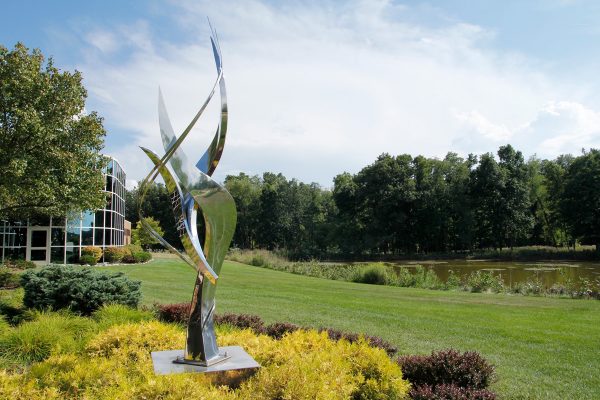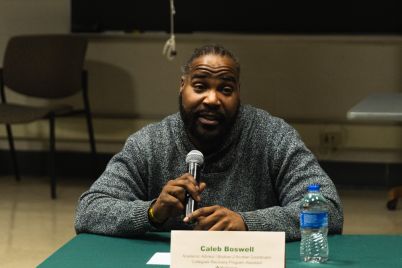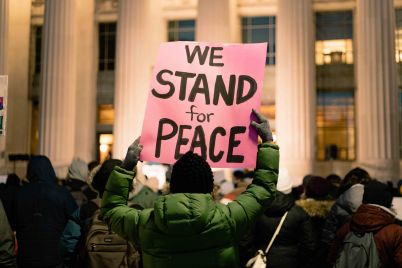
A guided art path around campus is one of the ideas mentioned in the WCC master plan. The master plan functions as a way to brainstorm for future needs. Voice File Photo
By Lilly Kujawski
Editor
Demographic predictions indicate that the needs of WCC students in the future will differ from the needs of present-day students.
To help forecast those needs and generate ideas of how to meet them, college administrators develop something called a master plan, according to Julie Morrison, executive director of institutional effectiveness, planning and accreditation at WCC.
The master plan is really a speculative “guide to decision-making down the road” that considers factors like future trends, student demographics and job and education outlooks, Morrison said.
An aging population is one trend that stands out, Morrison said. According to Southeast Michigan Council of Governments, the 65 plus age population in Washtenaw County is expected to increase the fastest, with a predicted 22% growth by 2045. The 25-64 age group is also increasing; in fact, the only decreasing age group is of those 24 and younger.
The last master plan was created in 2007 and the college is working to create an updated version, Morrison said.
WCC contracted Albert Kahn Associates, a Detroit-based architecture firm, to help in facilitating the plan, Morrison said. The firm examined the college’s facilities and space-utilization, took inventory and conducted an environmental scan.
Morrison said administrators distributed this information, as well as anticipated trends and demographics, campus-wide to prepare people for the master planning process.
The college held sessions with WCC faculty, staff, students, WTMC, the WCC Foundation and college alumni, as well as outside community leaders, to get input from the community about what needs a future WCC student may have, Morrison said.
From there, Albert Kahn Associates analyzed the information and came up with recommendations based on trends and themes in the data.
“It’s a framework, really, to help the college think about how we might meet the needs of students and the community over the next… five, 10 and 15 years,” Morrison said.
Some of the ideas that came out of the analysis included more collaborative work spaces around campus, improved outdoor space, a guided art-walk path throughout the campus, food trucks, a redesigned transportation route, and a mixed-use hotel facility that could also function as student housing.
It’s important to note that these ideas are purely in the brainstorm phase—items on the master plan are not concrete directives, said Christina Fleming, WCC board of trustees chairwoman.
“The idea of the master plan is to go through… a big thought exercise with all the constituencies on campus, and let’s dream about what we would like it to be,” Fleming said. “High priority items are anything to do with student success and accomodations.”
This could include modernizing common areas to make them more conducive to collaborative work and study. Reorganizing the flow of traffic on campus is another idea on the table, Fleming said.
Another idea discussed in the master plan is the possibility of a mixed-use hotel facility on campus.
“I don’t see us going into the hotel business,” said Dave Devarti, WCC board of trustees member. “It may be beneficial to things like our summer labor trainings and other sort of conference things we do on the campus to land-lease or to lease some space in the land we own to a private entity that would build and manage a hotel.”
In the summer, WCC hosts training conferences for labor unions including The United Association of the Plumbing, Pipefitting and Sprinkler Fitting Industry (UA), the Ironworkers, the Operative Plasterers’ and Cement Masons’ International Association, and the United Union of Roofers.
In theory, a mixed-use hotel facility on campus would also include retail space and provide housing for students, Morrison said. However, a hotel facility is just a suggestion based on what is possible for the college to add to campus.
A master plan is different from a strategic plan, according to WCC President Rose Bellanca. A strategic plan includes the college’s more definitive projects. A master plan contains ideas and data to help future college officials approach the changing campus climate, said Bellanca.
The master plan is expected to be presented to the board of trustees at an upcoming meeting.


